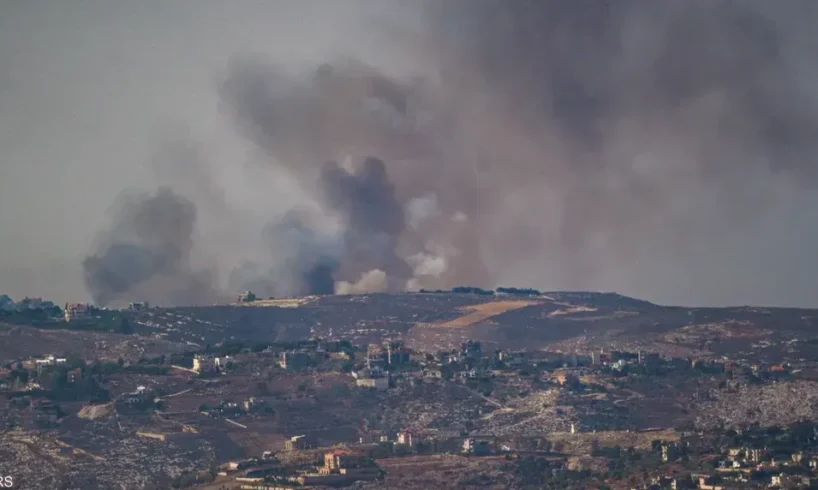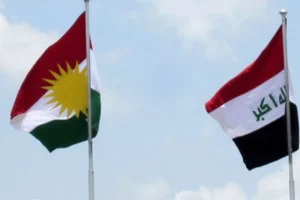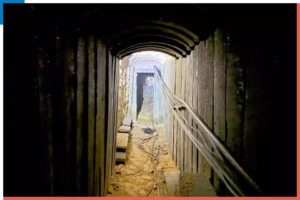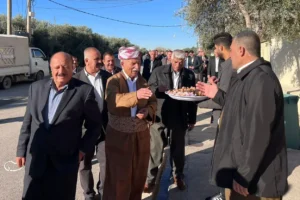
Shafaq News
Israel’s
leadership has issued the sharpest warnings in months that it could expand
military operations in Lebanon if Hezbollah’s post-ceasefire rebuilding
continues—raising a central question for Beirut and the region: does this
signal a slide toward a new war, or a calibrated campaign meant to restore
deterrence without crossing into all-out conflict?
Recent
Israeli statements, UN peacekeeping alerts, and field developments point to a
precarious “controlled escalation” phase—one that could flip quickly if
political restraints erode or if a single incident breaches Israeli red lines.
A Fragile
Truce With Moving Goalposts
A ceasefire
between Israel and Hezbollah took effect on November 27, 2024, after more than
a year of hostilities layered onto the Gaza war, including two months of
devastating fighting that killed more than 4,000 people and injured around
17,000 in Lebanon. Despite the truce, Israel has retained positions in several
pockets of southern Lebanon, and cross-border strikes have persisted.
UNIFIL has
repeatedly warned that Israeli actions north of the Blue Line—most recently an
alleged incursion near Blida on October 30, 2025—violate Resolution 1701 and
risk unraveling the uneasy calm.
According to
Lebanon’s Health Ministry, as of late October 2025, at least 300 people have
been killed and 650 injured since the ceasefire. Many displaced residents who
tried returning to their villages found Israeli troops still deployed nearby.
The death toll continues to climb, with new strikes reported this week in
Nabatieh and other southern areas. Israel maintains it is targeting Hezbollah
operatives, but most of the victims have been civilians, including women and
children, according to the Health Ministry.
Targeted
Strikes And Contested Narratives
Prime
Minister Benjamin Netanyahu warned that Israel “will not allow Lebanon to
become a renewed front,” accusing Hezbollah of rearming and vowing to act “as
necessary.”
Defense
Minister Israel Katz struck the same tone, suggesting that if Beirut fails to
act, Israel will. Israeli media frame this as “deterrence through
escalation”—limited, tactical pressure meant to prevent Hezbollah’s logistical
rebuild without committing to a full-scale war.
Analysts in
Beirut view this as part of Israel’s post-Gaza deterrence recalibration — a
shift from containment to deterrence through attrition, designed to maintain
pressure on Hezbollah while avoiding a politically costly ground war.
UNIFIL and
Washington are both pressing for restraint. The UN mission continues to urge
adherence to Resolution 1701 and restoration of Lebanese state authority in the
south. US Envoy Amos Hochstein, who has led border talks throughout 2025, said
a land-border arrangement is “within reach” if political will exists—a deal he
sees as critical to locking in ceasefire understandings and avoiding a relapse
into major combat. Yet progress has been halting.
Following
Hochstein’s months-long shuttle diplomacy, US Envoy Tom Barrack has issued
tougher public warnings linking de-escalation to measurable steps on the
ground. He has urged strict adherence to 1701, demanded the pullback of all
“non-state” armed elements north of the Blue Line, and called for the Lebanese
state to reassert control in coordination with UNIFIL.
Barrack also
pushed for sequenced border arrangements tied to verifiable milestones rather
than open-ended promises, stressing that continued Hezbollah rearmament would
narrow the space for diplomacy and risk a wider confrontation. His tone has
been more coercive than conciliatory—framing Lebanese action as a precondition
for avoiding war while underscoring the need to protect civilians and prevent
further displacement.
Lebanese
authorities have responded by framing recent Israeli incursions and strikes as
violations of sovereignty and international law. President Joseph Aoun
instructed the army to confront any further incursions, calling the Blida
operation a breach of both Lebanese territory and Resolution 1701.
The Lebanese
Army Command condemned the attacks as “criminal acts” and reiterated that
Israel must fully withdraw from Lebanese land. Beirut continues to support the
1701 framework, pledging to extend state authority in the south and cooperate
with UNIFIL while rejecting any unilateral Israeli “security zones.”
Officials
emphasize that Lebanon’s priority remains the safe return of displaced families
to border villages and the reconstruction of communities devastated by months
of fighting. Diplomatically, Beirut favors continued engagement with
international mediators, maintaining that a political path—not expanded
military confrontation—offers the only sustainable exit from the crisis.
On the
ground, the conflict’s rhythm has become familiar: pinpoint Israeli strikes on
alleged Hezbollah infrastructure and personnel, accompanied by announcements of
disrupted supply lines or Radwan Force operatives killed. UNIFIL regards such
actions as cumulative violations eroding the truce’s foundations. Each warning
from the mission now doubles as a political signal that the 1701 guardrails are
weakening.
Israeli
leaders appear to be pursuing three overlapping goals: to slow Hezbollah’s
rearmament through precision strikes; to raise the political cost for Beirut by
invoking state responsibility under 1701; and to preserve operational freedom
while keeping a full-scale campaign as a credible threat.
This
approach points to continued tactical intensification—more operations like
those reported near Kfar Roummane and Meiss al-Jabal—paired with public
warnings designed to deter without forcing a decision for war.
Barrack’s
warnings amplify the pressure track, while Hochstein’s diplomacy offers a
reconstruction and border-settlement track. Together they form a dual US
strategy: tighten constraints on Hezbollah while maintaining an exit ramp
through diplomacy and aid if Lebanese institutions assert greater control in
the south.
Are We
Heading For A New War?
Israel’s
current pattern of operations amounts to coercive signaling just below the
threshold of open war. Repeated precision strikes, rhetorical escalation, and
diplomatic framing that shifts responsibility to the Lebanese state under 1701
reflect a strategy of deterrence-through-attrition rather than preparation for
an outright invasion.
However, a
single mass-casualty event—whether a misfired rocket, an Israeli raid gone
wrong, or a targeted assassination—could shatter the fragile rules of
engagement. Likewise, visible Hezbollah deployments south of the Litani or
installation of new precision munitions and anti-air systems could cross
Israel’s declared red lines.
Diplomatic
failure is another danger: if border-arrangement talks collapse and UNIFIL’s
authority erodes, armed actors could set the pace on both sides. Internal
Israeli politics could also accelerate escalation if leaders conclude that only
a decisive military move will allow displaced residents of northern Israel to
return home.
US and
European governments are exerting pressure to contain the conflict while
broader regional crises—particularly Gaza stabilization and Red Sea
security—remain unresolved.
Both Israel
and Lebanon are mindful of the immense costs of renewed escalation. The 2024
fighting demonstrated how quickly strikes can spiral and how hard it is to
limit civilian damage once operations intensify. Lebanon’s economy and
infrastructure remain too fragile to absorb another round of destruction.
Finally,
ambiguity in the ceasefire’s exact terms gives both sides diplomatic breathing
room. Competing interpretations of Hezbollah’s disarmament timeline make
compliance complex but also allow space for negotiation rather than
confrontation.
The danger
now lies in how little space remains between deterrence and war. Israel’s
calibrated strikes and Hezbollah’s quiet rebuilding keep both sides in a state
of tense equilibrium—sustainable only as long as political restraint holds.
Whether this fragile balance endures, or collapses will depend on the
credibility of diplomacy and the willingness of regional actors to enforce it.
Written and
edited by Shafaq News staff.





